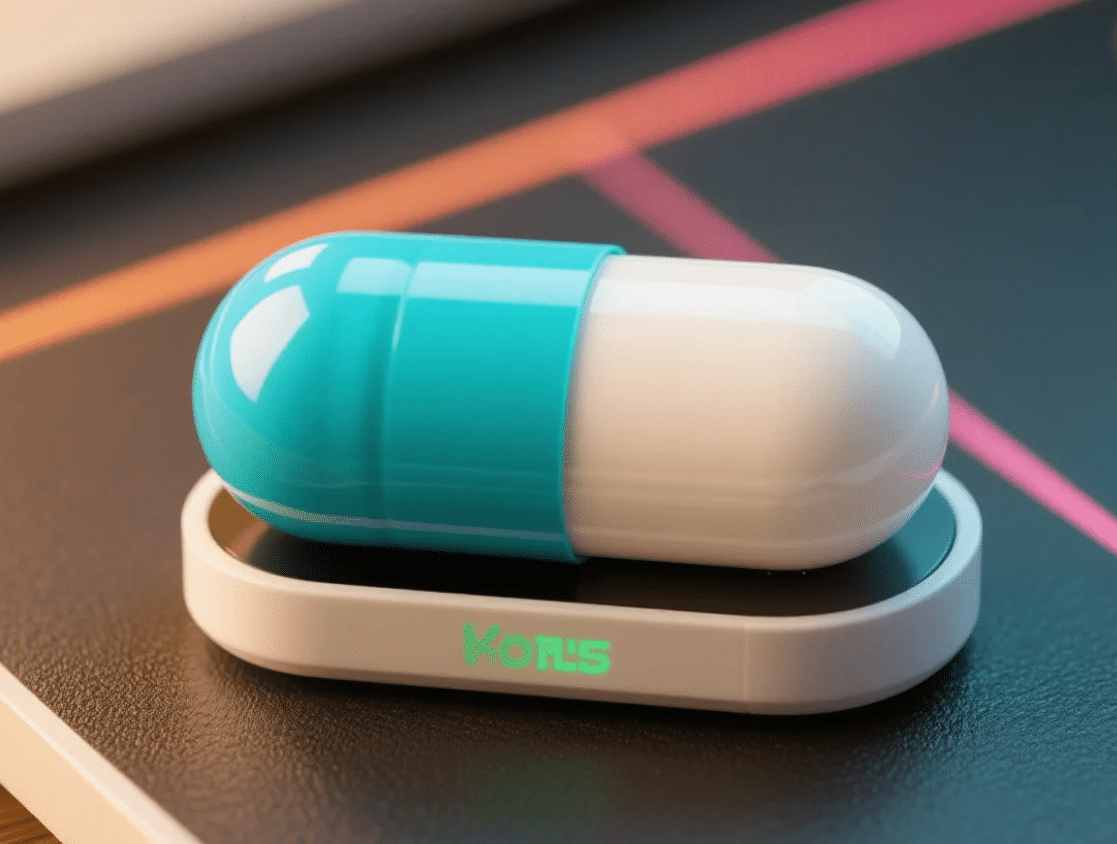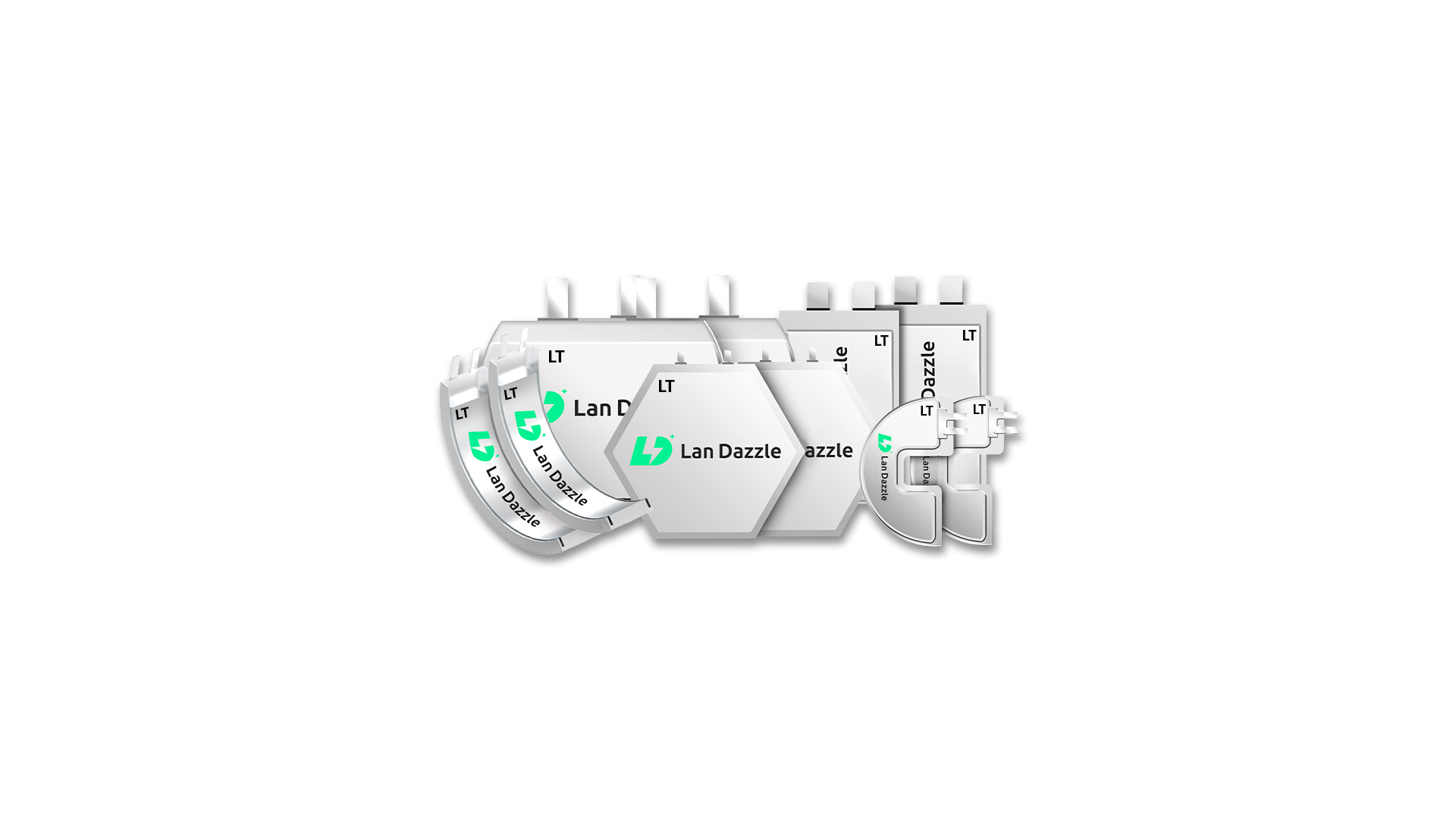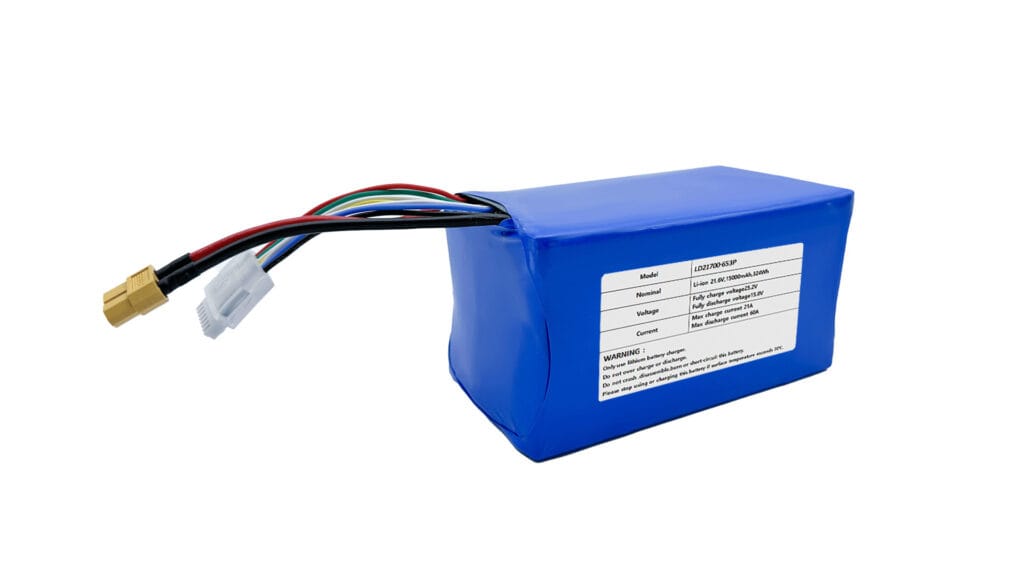Introduction: Swallowing the Future of Medicin
Smart capsules are tiny, vitamin-sized devices packed with advanced technology like sensors, cameras, and wireless systems, offering a groundbreaking way to diagnose, treat, and monitor health from inside the body. Evolving from early capsule endoscopy, these ingestible tools now enable targeted drug delivery, real-time diagnostics, and improved patient adherence. As a next-generation medical innovation, smart capsules mark a major shift toward more personalized, precise, and proactive healthcare.
What Batteries are Used in Smart Capsules?
Smart capsules—tiny ingestible electronic devices—rely on compact, reliable, and biocompatible batteries to function safely inside the human body. The choice of battery is critical, as it must deliver stable power in a miniaturized form while operating in the harsh environment of the gastrointestinal (GI) tract. Here’s an overview of the types of batteries typically used in smart capsules:
Primary (Non-Rechargeable) Lithium Batteries
These are the most commonly used batteries in smart capsules due to their high energy density, long shelf life, e stable performance.
-
Lithium Manganese Dioxide (Li-MnO₂)
-
✅ High energy output
-
✅ Flat or cylindrical form options
-
✅ Widely used in medical devices like capsule endoscopy
-
✅ Safe and stable in body temperature conditions
-
-
Lithium Carbon Monofluoride (Li-CFx)
-
✅ Very high energy density
-
✅ Long operating life
-
❗ Higher cost
-
📍 Used in longer-duration diagnostic capsules
-
Micro Coin Cell Batteries
-
Miniature button or coin cells are sometimes used in smart pills for short-term applications.
-
Example: CR1025, CR1220-type batteries
-
✅ Low cost
-
❌ Limited lifespan and energy capacity
Solid-State Batteries (Emerging)
-
Some R&D capsules use batterie al litio allo stato solido, which offer:
-
✅ Thin, flexible design
-
✅ Improved safety (no liquid electrolyte)
-
✅ Potential for future use in smart capsule sensors and drug delivery systems
-
Custom Shaped Lithium Batteries
For next-gen smart capsules that include multiple sensors, cameras, or drug reservoirs, custom-shaped lithium polymer (LiPo) batteries may be developed:
-
✅ Ultra-thin and flexible
-
✅ Tailored to fit curved or irregular capsule interiors
-
✅ Ideal for smart ring-like or segmented capsule designs
-
❗ Must be encapsulated for biocompatibility and safety
The Core Functionality: How Smart Capsules Work
At the heart of smart capsule technology lies astonishing miniaturization. These devices, typically a few centimeters long and less than a centimeter in diameter, house complex microelectronics within their robust, biocompatible casings. Each component plays a crucial role in their sophisticated operation:
-
Miniaturized Technology:
- Micro-sensors: These are the “eyes” and “feelers” of the capsule, capable of detecting and measuring a variety of physiological parameters. This includes pH levels (indicating acidity/alkalinity), temperature, pressure, and even specific chemical biomarkers linked to disease.
- Tiny Cameras: For diagnostic smart capsules, high-resolution miniature cameras capture thousands of images as the capsule traverses the gastrointestinal (GI) tract.
- Wireless Transmitters: Essential for real-time communication, these transmitters send the collected data to an external receiver worn by the patient, typically on a belt or as a patch.
- Power Source: Usually a small, long-lasting battery designed to operate for the capsule’s full transit time, which can range from several hours to multiple days.
- Micro-Electro-Mechanical Systems (MEMS) and Nanotechnology: These advanced engineering principles enable the creation of these tiny, intricate components with high precision and reliability.
-
Mechanism of Action: Once ingested, the smart capsule begins its journey through the digestive system, propelled naturally by peristalsis. As it travels, its sensors continuously collect data or its camera captures images. This information is then wirelessly transmitted, often via low-power radio frequency signals, to the external receiver. This receiver typically connects to a smartphone app or a dedicated software platform, where the data is stored, organized, and prepared for analysis by healthcare professionals. Advanced algorithms and artificial intelligence can further process this vast amount of data, helping clinicians interpret findings more efficiently and accurately.
-
Types of Smart Capsules: While the underlying technology is similar, smart capsules generally fall into two main categories:
- Diagnostic Capsules: Primarily used for imaging and sensing physiological parameters to aid in disease detection.
- Therapeutic Capsules: Designed for targeted drug delivery, releasing medication precisely where and when it’s needed.
Revolutionizing Diagnostics: Seeing Inside the Body
The ability of smart capsules to provide a non-invasive window into the internal workings of the body has fundamentally changed diagnostic procedures, particularly within gastroenterology.
Capsule Endoscopy (The Pioneer)
The most established and widely used form of smart capsule is the capsule endoscope. Pioneered by Given Imaging (now part of Medtronic) with their PillCam system, this technology offers a revolutionary alternative to traditional, invasive endoscopic procedures for examining the small bowel.
- Punti chiave: Unlike conventional endoscopy or colonoscopy, which require tubes inserted into the body and often sedation, capsule endoscopy is entirely non-invasive. The patient simply swallows the capsule, and it autonomously captures images as it passes through the digestive tract.
- Conditions Diagnosed: Capsule endoscopy is invaluable for diagnosing conditions affecting the small intestine, which is notoriously difficult to access with traditional scopes. These include:
- Obscure gastrointestinal bleeding (the most common indication)
- Crohn’s disease
- Celiac disease
- Small bowel tumors and polyps
- Evaluation of malabsorption syndromes
- Statistics: The global capsule endoscopy market, valued at approximately USD 600-700 million in 2023, is projected to grow significantly, indicating increasing adoption due to its diagnostic accuracy and patient comfort. Studies show that capsule endoscopy has a high detection rate for small bowel abnormalities, often identifying pathologies missed by other diagnostic methods.
- Esempio: Il Medtronic PillCam has become a gold standard for small bowel examination. Patients can undergo the procedure in an outpatient setting, allowing them to continue with most daily activities while the capsule works. The collected images are later reviewed by a gastroenterologist, providing detailed visual information about the small intestine’s lining.
Advanced Diagnostic Capabilities
Beyond visual imaging, smart capsules are evolving to become sophisticated physiological monitoring tools.
- Punti chiave:
- pH Monitoring: Smart capsules can track pH levels throughout the entire GI tract. This is crucial for diagnosing conditions like gastroesophageal reflux disease (GERD) and for assessing the efficacy of acid-suppressing medications.
- Temperature and Pressure Sensing: Monitoring internal temperature can detect inflammation, while pressure sensors can assess gut motility and contractions, aiding in the diagnosis of disorders like gastroparesis (delayed stomach emptying) or chronic constipation.
- Biomarker Detection: The frontier of smart capsule diagnostics involves the detection of specific biomarkers. Researchers are developing capsules capable of identifying proteins, DNA fragments, or metabolic byproducts associated with various diseases, including early-stage cancers or inflammatory conditions, offering the potential for ultra-early detection and intervention.
- Data Integration: The data gathered by these advanced diagnostic capsules can be seamlessly integrated with electronic health records (EHRs), allowing healthcare providers to gain a more comprehensive and holistic understanding of a patient’s health status, leading to more informed and personalized treatment plans. For instance, Medtronic’s SmartPill motility testing system measures pressure, pH, and temperature to evaluate gastric emptying time and whole gut transit time, providing objective data for diagnosing GI motility disorders.
Precision Medicine: The Era of Targeted Drug Delivery
One of the most revolutionary applications of smart capsules is in the field of drug delivery, where they promise to usher in an era of truly personalized and precise medicine.
Overcoming Drug Delivery Challenges
Traditional systemic drug administration, where medication is absorbed into the bloodstream and distributed throughout the body, often faces significant challenges:
- Inefficient Targeting: A large percentage of the drug may not reach the intended diseased site, leading to wasted medication and potential sub-therapeutic effects at the target.
- Systemic Side Effects: Non-specific distribution can cause adverse reactions in healthy tissues and organs, leading to discomfort, toxicity, and even treatment cessation.
- Drug Degradation: Medications, especially biologics or sensitive compounds, can degrade in the harsh environment of the stomach or be poorly absorbed in the GI tract before reaching their intended destination.
Mechanisms of Targeted Release
Smart capsules are engineered to overcome these limitations by releasing drugs precisely where and when they are needed.
- Punti chiave:
- pH-Sensitive Coatings: The capsule’s outer shell can be designed to dissolve only at specific pH levels found in different parts of the GI tract (e.g., higher pH in the small intestine or colon), ensuring release at the desired location.
- Time-Release Mechanisms: Polymers can be programmed to degrade over a set period, releasing the drug gradually or at a predetermined time.
- Wireless Triggered Release: More advanced concepts involve external wireless signals (e.g., magnetic fields or radio waves) that can remotely activate the capsule to release its payload upon reaching the precise target site, offering unprecedented control.
- Benefits: This targeted approach significantly enhances drug efficacy by delivering a higher concentration of the therapeutic agent directly to the disease site. It also minimizes systemic exposure, thereby reducing unwanted side effects and improving patient tolerability. This often means lower dosages are required, leading to cost-effectiveness and improved safety profiles.
Applications and Impact
The implications for chronic diseases are profound.
- Conditions:
- Inflammatory Bowel Disease (IBD): For conditions like Crohn’s disease and Ulcerative Colitis, smart capsules could deliver anti-inflammatory drugs directly to inflamed sections of the colon or small intestine, maximizing local effect and minimizing systemic immunosuppression.
- Colon Cancer: Targeted delivery of chemotherapy agents directly to colon tumors could improve treatment efficacy while sparing healthy tissue, reducing debilitating side effects.
- Stomach Ulcers/H. pylori: Precision delivery of antibiotics or protective agents to specific ulcer sites could enhance healing rates.
- Case Study/Example (Conceptual): Imagine a smart capsule carrying a biologic drug for Crohn’s disease. Instead of the patient receiving an intravenous infusion that circulates throughout their body, the smart capsule travels to the exact inflamed segment of the ileum, and upon sensing the inflammatory markers or reaching a specific pH, it precisely releases the medication. This localized delivery could lead to faster symptom relief, longer remission periods, and a dramatically improved quality of life with fewer side effects. While still largely in research and clinical trials, the promise of such systems is immense. Data suggests that targeted therapies, when successful, can improve patient outcomes by a significant margin compared to conventional methods, often by reducing adverse events and increasing drug concentration at the site of action.
Empowering Patients: Real-Time Monitoring & Adherence
Smart capsules are not just about diagnosis and treatment; they are also powerful tools for continuous health monitoring and, critically, for improving medication adherence, placing more control and insight directly in the hands of patients and their care teams.
Continuous Health Monitoring
- Punti chiave: The ability to continuously track physiological parameters from inside the body opens doors to proactive health management. Beyond GI health, research is exploring smart capsules that can monitor vital signs, glucose levels (for diabetes management), or even detect specific pathogens or changes in gut microbiome composition.
- Benefits: This real-time data allows for early detection of deviations from normal parameters, enabling prompt intervention and personalized adjustments to treatment plans. For patients with chronic conditions, it means continuous oversight without constant clinical visits, leading to better long-term outcomes and a reduction in emergency hospitalizations.
- Esempio: While its commercial journey faced hurdles, Proteus Digital Health pioneered the concept of an ingestible sensor (part of a smart pill) that, when ingested, would send a signal to a wearable patch, confirming medication intake. Though not solely for continuous vital monitoring, its foundational technology demonstrated the immense potential for collecting internal body data to inform health management, particularly for chronic conditions like diabetes or heart failure, where understanding medication effects and physiological responses is paramount.
Medication Adherence Tracking
Medication non-adherence is a pervasive and costly problem in healthcare, leading to poorer patient outcomes and significant economic burden.
- Punti chiave: Patients often miss doses or discontinue medication for various reasons. Smart capsules with ingestible sensors address this directly by confirming that a medication has been swallowed.
- Meccanismo: A tiny sensor embedded in the pill communicates with a wearable patch upon contact with stomach fluids. The patch then transmits the data (time of ingestion) to a secure app on the patient’s smartphone, which can be shared with their healthcare provider.
- Benefits: Improved patient outcomes through consistent treatment, reduced healthcare costs by preventing complications stemming from non-adherence, and enhanced communication between patients and their care teams, allowing for timely interventions if doses are missed.
- Statistics: Non-adherence to medication costs the US healthcare system an estimated $100-$300 billion annually and is a factor in approximately 125,000 deaths. Smart pill technology offers a direct solution to this critical public health challenge.
Remote Patient Management
By providing continuous, objective data from within the body, smart capsules are vital enablers of modern telehealth and remote patient monitoring models.
- Punti chiave: They reduce the need for frequent in-person clinic visits for data collection, making healthcare more accessible and convenient, especially for patients in remote areas or those with mobility issues.
- Benefits: This continuous oversight allows clinicians to proactively manage chronic conditions, identify potential issues before they escalate, and provide timely, personalized feedback to patients, transforming reactive care into proactive prevention and management.
The Road Ahead: Challenges and Future Prospects
While the transformative potential of smart capsules is clear, their widespread adoption and continued evolution face several hurdles and exciting opportunities.
Current Challenges
- Cost of Technology: The advanced manufacturing processes and sophisticated components make smart capsules relatively expensive, potentially limiting access for some patients and healthcare systems.
- Ostacoli normativi: Gaining regulatory approval (e.g., from the FDA) for these novel medical devices is a complex, lengthy, and costly process, requiring rigorous testing for safety and efficacy.
- Data Privacy and Security: Smart capsules collect highly sensitive personal health information. Ensuring the secure transmission, storage, and access of this data is paramount to maintaining patient trust and complying with strict privacy regulations like HIPAA.
- Patient Acceptance: Some patients may have reservations about ingesting an electronic device, requiring clear communication and education about their safety and benefits.
- Data Interpretation: The sheer volume of data generated by continuous monitoring smart capsules can be overwhelming for clinicians, necessitating sophisticated AI-driven analytics tools for efficient interpretation.
Prospettive future
Despite the challenges, the future of smart capsules is incredibly promising, driven by relentless innovation.
- Punti chiave:
- Further Miniaturization: Capsules will become even smaller, potentially leading to easier ingestion and more versatile applications.
- AI Integration for Predictive Analytics: AI will play an increasingly vital role in analyzing the vast datasets from smart capsules, identifying subtle patterns, predicting disease progression, and suggesting personalized interventions before symptoms even appear.
- Advanced Sensing Capabilities: Future capsules may detect an even broader range of biomarkers, including genetic markers, specific cancer cells, or even neurological signals, offering unprecedented diagnostic precision.
- Integration with Wearable Tech and IoT Ecosystems: Seamless connectivity with smartwatches, health trackers, and other Internet of Medical Things (IoMT) devices will create a comprehensive, interconnected health monitoring system.
- Bio-printing Personalized Smart Capsules: Research is exploring 3D bio-printing techniques to create custom-tailored smart capsules for individual patient needs, potentially even embedding living cells for targeted drug production within the body.
- Impact: The global smart pills market is projected to reach USD 3.4 billion by 2034, growing at a significant compound annual growth rate (CAGR) of 11.6%. This growth underscores the industry’s confidence in their potential to contribute to a future of healthcare that is truly personalized, preventative, and predictive.
Conclusion: A New Era of Internal Insight
Smart capsules are transforming healthcare by offering real-time imaging, targeted drug delivery, and continuous monitoring—all from within the body. They enable earlier diagnosis, more effective treatments, and greater patient engagement. While challenges like cost and data security remain, rapid advances in miniaturization and AI are driving their growth.
At Lan Dazzle, we support this innovation with custom-designed lithium batteries that are ultra-compact, safe, and powerful—perfectly suited for the next generation of ingestible medical devices. If you have any needs, feel free to contact us at info@landazzle.com.





